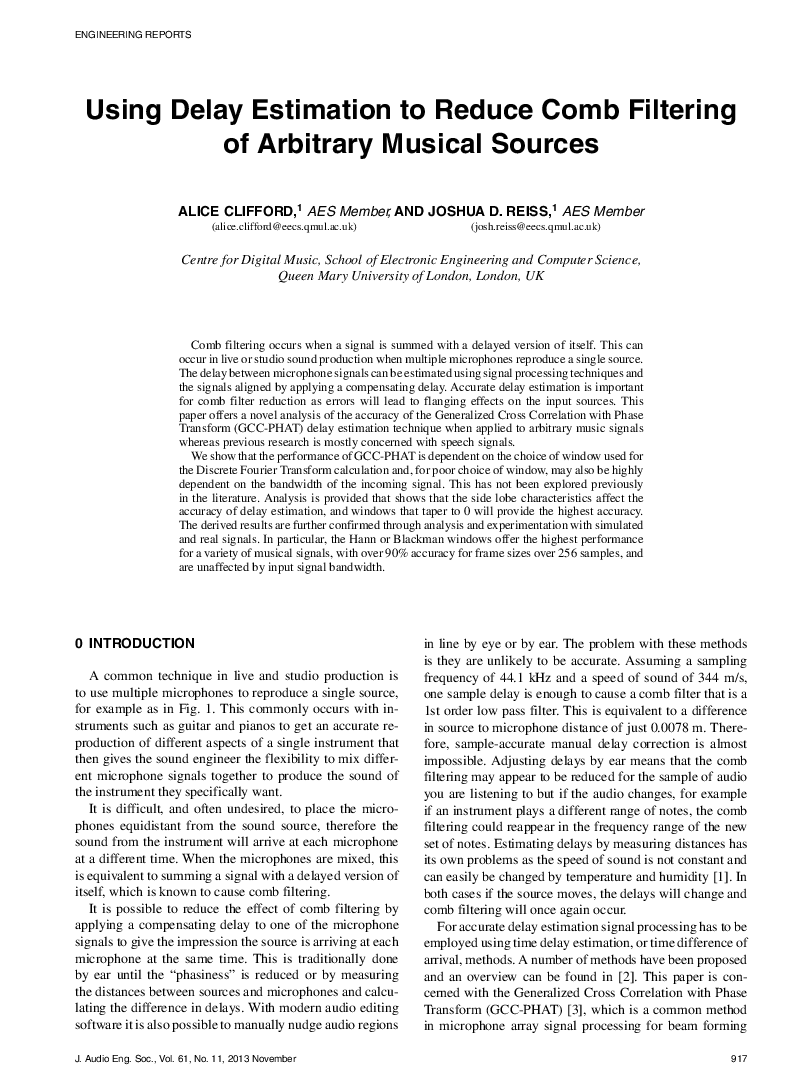Home / Publications / E-library page
You are currently logged in as an
Institutional Subscriber.
If you would like to logout,
please click on the button below.
Home / Publications / E-library page
Only AES members and Institutional Journal Subscribers can download
Multiple microphones are often used to record a single source in live and studio productions. Because such microphones are often at different distances from the source, the sum of their signals creates a comb filter response with flanging effect. These effects can be avoided if there is automated delay compensation. This article analyzes the accuracy of the Generalized Cross Correlation with Phase Transform (GCC-PHAT) as a delay-estimation technique when applied to arbitrary music signals. The authors show that the window function used in the GCC-PHAT calculation influences the interferences between frequency components with different amplitudes, which results in spectral leakage and errors in the GCC-PHAT calculation. This interference is greatest when the input signal is narrowband and when the window function has high-amplitude side lobes.
Author (s): Clifford, Alice; Reiss, Joshua D.
Affiliation:
Centre for Digital Music, School of Electronic Engineering and Computer Science, Queen Mary University of London, London, UK
(See document for exact affiliation information.)
Publication Date:
2013-11-06
Import into BibTeX
Permalink: https://aes2.org/publications/elibrary-page/?id=17072
(485KB)
Click to purchase paper as a non-member or login as an AES member. If your company or school subscribes to the E-Library then switch to the institutional version. If you are not an AES member Join the AES. If you need to check your member status, login to the Member Portal.

Clifford, Alice; Reiss, Joshua D.; 2013; Using Delay Estimation to Reduce Comb Filtering of Arbitrary Musical Sources [PDF]; Centre for Digital Music, School of Electronic Engineering and Computer Science, Queen Mary University of London, London, UK; Paper ; Available from: https://aes2.org/publications/elibrary-page/?id=17072
Clifford, Alice; Reiss, Joshua D.; Using Delay Estimation to Reduce Comb Filtering of Arbitrary Musical Sources [PDF]; Centre for Digital Music, School of Electronic Engineering and Computer Science, Queen Mary University of London, London, UK; Paper ; 2013 Available: https://aes2.org/publications/elibrary-page/?id=17072